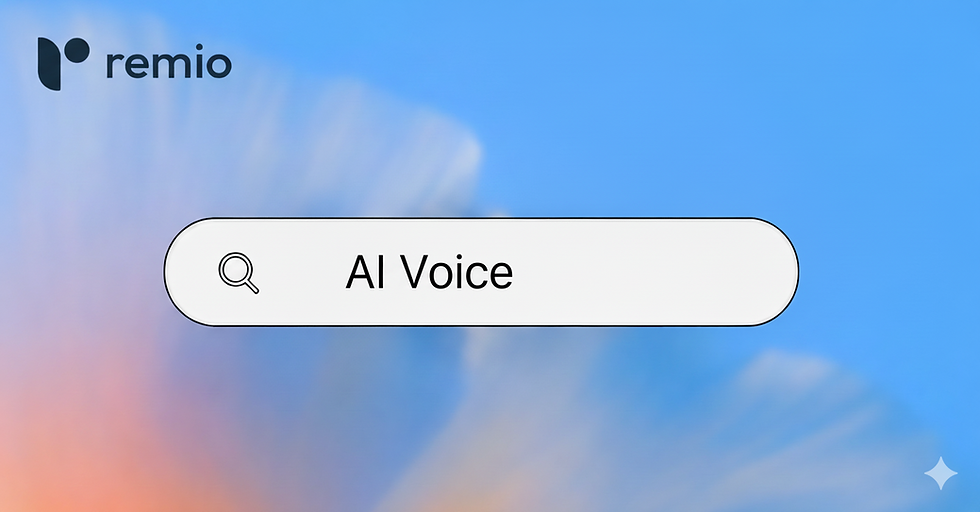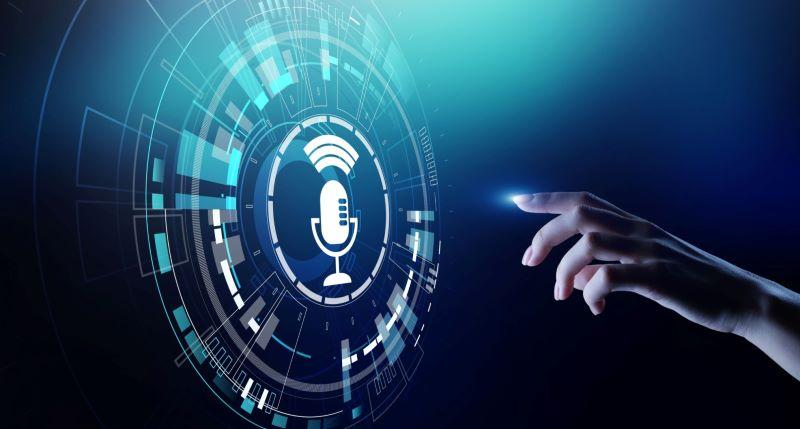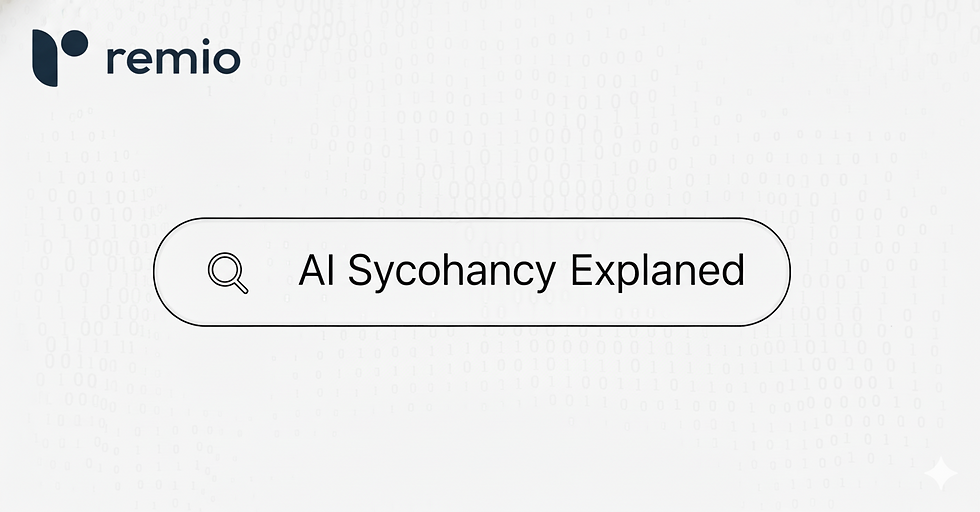How AI Voice Technology Is Blurring the Lines Between Human and Machine
- Ethan Carter

- Oct 8
- 9 min read

From the virtual assistants in our pockets to the automated agents handling our customer service calls, AI-generated voices have become an invisible, yet ever-present, part of modern life. The technology has evolved at a breathtaking pace, moving far beyond the robotic, stilted speech of early systems to produce voices that are natural, emotive, and increasingly human-like. This rapid advancement raises a crucial and compelling question: Can we still reliably tell the difference between a real human voice and one generated by an algorithm?
With the rise of "hyperrealistic" AI-generated faces—images so convincing they are often perceived as more real than actual human photos—researchers have turned their attention to the auditory realm. This article delves into a recent scientific study that puts our perception to the test, exploring whether a similar hyperrealism effect exists for AI voices. We will unpack the science of how we perceive synthetic speech, examine the subtle cues that give them away (or don't), and discuss the profound social and ethical implications of a world where the line between human and machine is no longer clear.
The Unseen Rise of the AI Voice

From Robotic Speech to Natural Conversation
The journey of voice synthesis began with a simple goal: to generate speech that was merely intelligible. Early text-to-speech (TTS) systems were functional but lacked the cadence, intonation, and warmth of human communication. However, fueled by advancements in artificial intelligence and deep learning, the technology has made monumental leaps. Today's state-of-the-art generative AI can produce synthetic voices that convincingly mimic vocal identities, emotional nuances, and natural speech patterns, making interactions feel far more authentic. This technology is no longer a novelty; it is a fundamental tool used across industries for everything from creating audiobooks and podcasts to providing voice-overs for advertisements and social media content.
Why We're Talking About It Now
The conversation around AI voices has intensified for two key reasons. First, the tools to create them have become widely available and affordable, allowing almost anyone to generate synthetic speech with ease. Second, an intriguing phenomenon known as the "hyperrealism effect" was discovered in the visual domain. Studies found that AI-generated faces were not only indistinguishable from real faces but were sometimes judged to be more trustworthy and even more human than the real thing. This prompted scientists to investigate whether the same could be true for voices. Understanding how humans perceive and react to these increasingly realistic voices is critical, as the technology holds both immense promise and significant potential for misuse.
The Science of Telling Voices Apart
What is an AI Voice? Generic vs. Cloned
Not all AI voices are created equal. The study at the heart of our discussion examined two distinct types of AI-generated voices created using state-of-the-art tools like ElevenLabs.
Generic AI Voices: These are novel vocal identities generated from within the "latent space" of a large voice model. Think of it as the AI creating a new, synthetic person's voice from scratch based on parameters like gender, age, and accent. These are commonly used for general-purpose applications like narrating online content or powering virtual assistants.
Voice Clones:This type of AI voice is created by training a model on recordings of a specific, real person to mimic their unique vocal characteristics with high accuracy. Using just a few minutes of audio, the technology can generate a "clone" capable of speaking any text in that person's voice.
The "Hyperrealism" Puzzle: No Uncanny Valley for Voices?
The central question of the research was whether AI voices have achieved hyperrealism—the point where they are perceived as more real than human voices. The findings were nuanced. Across multiple experiments, the study found no overall hyperrealism effect for AI-generated voices. Generic AI voices, while convincing, were consistently rated as less real and less human than actual human voices.
However, the story was dramatically different for voice clones. Listeners rated voice clones as being just as real and human-sounding as recordings of actual people. While they weren't perceived as more real, they were statistically indistinguishable. This suggests that while the technology may not be "hyperrealistic" at a group level, it has certainly crossed a critical threshold of believability. For some individual voice-clone pairs, the clone was even rated as sounding more real than the original human recording, hinting that hyperrealism might be possible on a case-by-case basis.
The Experiment: Pitting Human vs. Machine

The Listening Test: How Researchers Tested Perception
To arrive at these conclusions, researchers conducted a series of carefully designed experiments. Participants were recruited online and tasked with listening to a randomized set of audio clips containing three types of voices: real human speakers, generic AI-generated voices, and AI voice clones. For each voice, they performed several tasks:
Trait Ratings: They rated how trustworthy and dominant each voice sounded on a scale from 0 to 100.
Realness Rating: They judged "how real" each voice sounded, again on a 0-100 continuous slider scale.
Classification Task: After being told that some voices were AI-generated, they made a binary choice for each clip: was it a "real human" or "AI-generated"?
This multi-faceted approach allowed researchers to not only see if people could tell the difference but also to measure the subtle social impressions these voices create.
The Surprising Verdict: We Can't Reliably Detect Voice Clones
The results of the classification task were striking. A signal detection analysis, which accounts for listener sensitivity and bias, revealed a clear divide.
Generic AI Voices:Listeners were able to distinguish generic AI voices from human voices with a moderate degree of sensitivity. While they were often fooled—mistaking a generic AI voice for a human 41% of the time—they were still better than chance at telling them apart.
Voice Clones:The distinction completely vanished when it came to voice clones. The analysis showed that listeners had no sensitivity to distinguish between human voices and their AI-cloned counterparts. Listeners misidentified voice clones as human 58% of the time, and their performance was effectively at chance level. Furthermore, participants showed a consistent bias toward judging voices as "human," especially when confronted with the highly realistic clones. The study demonstrates that with current technology, we cannot reliably discriminate AI voice clones from authentic human speech.
The Social Impact: Trust, Dominance, and Deception
More Dominant, Sometimes More Trustworthy
Beyond realism, the study uncovered fascinating differences in how we perceive the social character of AI voices. Across the board, both generic AI voices and voice clones were rated as sounding significantly more dominant than real human voices. This suggests that something in the acoustic properties of current AI-generated speech conveys a sense of authority or assertiveness more strongly than typical human speech.
More surprisingly, the findings on trustworthiness challenged previous assumptions. While some earlier research found synthetic voices to be less likable or trustworthy, this study found the opposite. Generic AI voices were perceived as significantly more trustworthy than human voices. Even though voice clones did not show a statistically significant difference, they trended in the same direction. This implies that AI voices can be engineered to connote specific human-like traits even more strongly than human voices themselves, a finding with major implications for how these voices are deployed in social and commercial contexts.
The Double-Edged Sword: From Accessibility to Fraud
The increasing realism of AI voices presents a classic dual-use dilemma. The potential for good is immense. The technology offers life-changing benefits, such as providing natural-sounding screen readers for visually impaired individuals or allowing people who have lost their ability to speak to communicate using a personalized, cloned voice. Companies and creators can also benefit from cost-effective voice generation for content.
However, the same technology opens the door to malicious use. The ability to create a highly accurate voice clone of a specific person is a powerful tool for misinformation, scams, and fraud. Imagine receiving a frantic call from a loved one asking for money, but the voice on the other end is a perfect AI clone. As listeners become unable to distinguish real from fake, the potential for deception grows exponentially, highlighting an urgent need for public awareness and protective measures.
Beyond Realism: What's Next for AI Voice Technology?

The Challenge of Dynamic Sound
Why has hyperrealism been achieved for static AI faces but not yet for dynamic AI voices? The researchers suggest a crucial difference between the modalities. A face image is a static snapshot. A voice, however, is a dynamic, time-varying signal that encodes a rich stream of linguistic and paralinguistic information. The human brain is expertly tuned to perceive and analyze this unfolding auditory information. Convincing our perceptual system that a synthetic, dynamic stream of speech is "more real" than an authentic one may be a fundamentally harder task than fooling it with a single, static image.
The Familiarity Factor: Could You Spot a Clone of a Loved One?
An important caveat of this research is that it used voices of strangers, who were unfamiliar to the participants. Listeners evaluated these voices against their general, prototypical idea of what a "real" human voice sounds like. But how would these results change if the voice being cloned was someone you knew intimately, like a partner or a close friend? Research on familiar voice recognition shows that our perceptual representations of personally familiar voices are incredibly robust and detailed. It is plausible that while a voice clone can fool an unfamiliar listener, the subtle imperfections might be glaringly obvious to someone with deep, long-term knowledge of the original speaker's voice. Future studies will need to explore this "familiarity factor" to fully understand our vulnerability to voice cloning.
Conclusion: Navigating a World of Synthetic Voices
Key Takeaways
The research paints a clear picture of where AI voice technology stands today. We are at a critical juncture where a key form of this technology—voice cloning—has become indistinguishable from reality for the average listener. The key conclusions are:
There is no evidence of a group-level "hyperrealism" effect for AI voices; they are not yet perceived as more real than human voices overall
State-of-the-art AI voice clones sound as real as human voices, and listeners are unable to reliably tell them apart
AI-generated voices are perceived as more dominant than human voices and, in some cases, even more trustworthy
The Path Forward
The widespread availability of human-like AI voices has profound implications for how we interact with technology and each other. It challenges our fundamental assumptions about authenticity and identity. As these tools become more sophisticated, we must engage in a broad societal conversation about their use. This includes developing ethical guidelines for AI voice design, creating technologies to detect synthetic media, and, most importantly, fostering public awareness. Continued research is essential to map how our perception of realness interacts with social judgments and to understand how the holistic experience of hearing an AI voice influences our attitudes and behaviors. The line between human and machine is blurring, and navigating this new reality requires both scientific inquiry and thoughtful consideration.
FAQ: Frequently Asked Questions About AI Voices

1. What is an AI voice clone?
An AI voice clone is a synthetic voice created by an AI model that has been trained on audio recordings of a specific person. The goal is to mimic the original speaker's voice—including their pitch, tone, and accent—with high accuracy, allowing the clone to speak any new text as if it were that person.
2. Can AI voices sound more real than human voices?
Currently, no. On a broad level, AI voices do not sound "more real" than human voices, an effect known as hyperrealism. However, research shows that voice clones can sound as real as human voices, to the point where listeners cannot tell them apart. In some specific, individual cases, a voice clone has been rated as more real than its human counterpart, but this is not a general trend.
3. Why are AI voices often rated as more "dominant"?
The study found that both generic AI voices and voice clones were consistently perceived as more dominant than real human recordings. While the exact acoustic reasons are still being investigated, this suggests that the algorithms used to generate these voices may be creating speech with characteristics (like a steadier pitch, fewer hesitations, or specific vocal tract resonances) that human listeners associate with confidence and authority.
4. What are the biggest risks of realistic AI voices?
The most significant risks involve deception and misuse. These include creating "deepfake" audio for misinformation campaigns, committing fraud by impersonating individuals in phone calls, manufacturing false evidence, and harassing or defaming people by making it seem like they said things they never did.
5. How can I protect myself from AI voice scams?
While detection is becoming harder, you can take steps to protect yourself. Be skeptical of urgent, high-pressure requests for money or personal information, even if the voice sounds familiar. If you receive a suspicious call, hang up and call the person back on a known, trusted number. Consider establishing a code word or a safe question with close family members that only you would know the answer to, which can be used to verify their identity in a suspicious situation.

